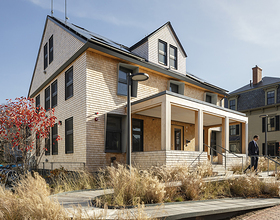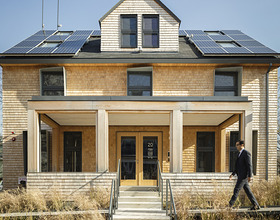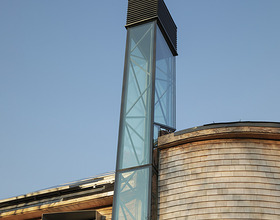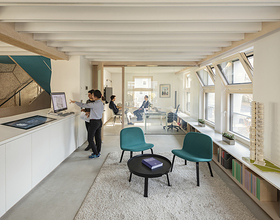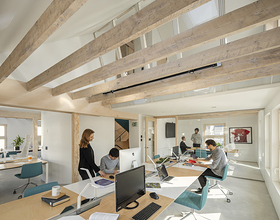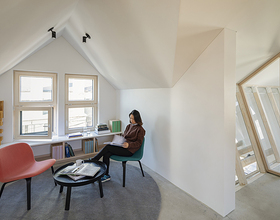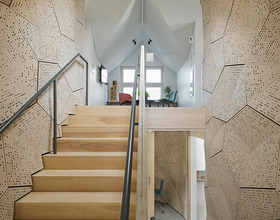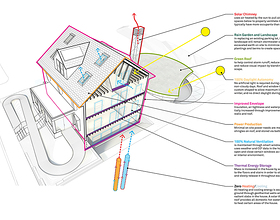HARVARD HOUSEZERO
-
The Harvard Center for Green Buildings and Cities at the Harvard Graduate School of Design has completed the retrofitting of its headquarters in a pre-1940s building in Cambridge into an ambitious living-laboratory and an energy-positive prototype for ultra-efficiency that will help us to understand buildings in new ways.
Even before the 2015 Paris agreement to curb global warming by 2050, it was understood that the building industry alone accounted for 40% of all worldwide energy use and thereby 40% of all global greenhouse gas emissions from the production of that energy. Looking to the future, roughly 65% of the total expected building stock in developed countries in 2060 is already constructed today, locking in decades of energy inefficiencies.
As a prototype, HouseZero works to address one of the biggest energy problems in the world today—inefficient existing buildings. The U.S. building stock is responsible for around 40 percent of energy consumption, with housing nearly a quarter of that use. Property owners spend more than $230 billion annually heating, cooling and powering its 113.6 million homes. Addressing the energy-inefficiencies locked into this problematic building stock offers tremendous opportunity for curbing its impact on climate change. Paving the way through ultra-efficient retrofit strategies, HouseZero creates a blueprint for reducing energy demands and increasing cost savings for property owners.
Targeting the most rigorous efficiency standards ever achieved by a building retrofit, HouseZero has the following performance goals:
1. Almost zero energy required for heating and cooling (No HVAC system)
2. 100% natural ventilation
3. 100% daylight autonomy (No daytime electric light)
4. Zero carbon emissions, including embodied energy in materials
The building will adjust itself seasonally, and even daily, to reach thermal comfort targets for its occupants. 285 sensors embedded within the building collect almost 17 million data points each day. This data infrastructure enables the building to immediately self-adjust in response to both internal and external variables such as outdoor air temperature or rain, and indoor CO2 levels and air temperature.
While the performance and research at HouseZero targets the building industry’s impact on climate change at large, it does so without sacrificing the day-to-day needs of its users. The design takes care to elevate the spatial experience and occupant comfort through ample daylighting and acoustic privacy.
Ultimately, the ultra-efficiency – and potential industry-wide replicability – of HouseZero lies at the intersection of cutting-edge technologies and innovative applications of established, low-tech, human-centric sustainable architectural design solutions.
Photo credits: Michael Grimm, Snøhetta
1870 Projects


